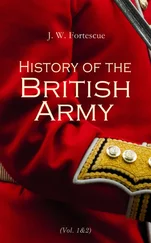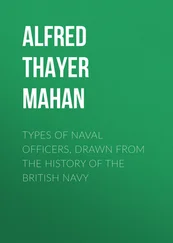But far more striking than these superficial changes is the sudden deluge of military pamphlets which burst over England from the year 1587 onwards. The earliest military treatise, so far as I have been able to discover, that was delivered to the English in the vulgar tongue is The Ordering of Souldiours in battelray, by Peter Whitehorn, which was published in 1560. This book produced, no doubt, some effect in its time, but it is of small import compared with those that follow. The earliest written by an Englishman, though not published until four years after his death, was the work of one William Garrard, gentleman, who had served with the King of Spain for fourteen years and died in 1587. It is a remorseless criticism of the existing English military system. The author sweeps away bows and bills in a single contemptuous sentence, and lays it down for a dogma that there are but two weapons, for the tall man the pike and for the little nimble man the arquebus. But in the matter of equipment, he notes that the English are lamentably deficient. As good an arquebus could be made in England as in any country, but the armourers had already learned to make cheap and nasty weapons for common sale to the poor men of the shire. Again, other nations carried their powder in flasks or metal cartridges, but the English actually carried theirs loose in their pockets, ready to be kindled by the first spark or spoiled by the first shower, and in any case certain to suffer from waste. Such slovenliness, says the indignant Garrard, is fit only "for wanton skirmish before ladies"; it is impossible for such arquebusiers to attain to the desirable consummation of "a violent, speedy, and thundering discharge." The pikemen, again, instead of a light poniard carried "monstrous daggers like a cutler's shop," fitter for ornament than use. Moreover, the dress of both was open to objection. Colour was a matter of indifference, though some fine hue such as scarlet was preferable for the honour of the military profession, but all military garments should be profitable and commodious, whereas nothing could hamper the limbs more than the great bolstered and bombasted hose that were then in fashion. I cannot resist the temptation of transcribing Garrard's picture of the march of the ideal soldier, and the delicate appeal to the soldier's vanity.
"Let the pikeman march with a good grace, holding up his head gallantly, his face full of gravity and state and such as is fit for his person; and let his body be straight and as much upright as possible; and that which most important is that they have their eyes always upon their companions which are in rank with them and before them, going just one with another, and keeping perfect distance without committing the least error in pace or step. And every pace and motion with one accord and consent they ought to make at one instant of time. And in this sort all the ranks ought to go sometimes softly, sometimes fast, according to the stroke of the drum. … So shall they go just and even with a gallant and sumptuous pace; for by doing so they shall be esteemed, honoured and commended of the lookers on, who shall take wonderful delight to behold them."
Earlier in appearance though not earlier composed than Garrard's was a shorter work by one Barnaby Rich, which appeared in 1587, and wherein the writer had the courage to condemn the practice of emptying the gaols into the ranks; but the great military book of the year was a translation from the French of La Noue, one of the noblest and ablest of the Huguenot commanders. Though written of course for Frenchmen, the soundness of doctrine in respect of discipline and equipment and the commendations of the Spanish system were of value to all; while of still greater import to England was the impassioned advocacy of the missile tactics of the Reiters for cavalry. But perhaps most striking of all in the light of later events is the deep note of Puritanism to which every page of the treatise is attuned. In La Noue's Huguenot regiments there were no cards, no dice, no swearing, no women, no leaving the colours for plunder or even for forage, but stern discipline at all times and public prayers morning and evening. It is difficult to suppress the conjecture that this book had been read and digested by Oliver Cromwell.
The strong opinions expressed in these books of course provoked controversy. Sir John Smyth, knight, an officer of some repute, boldly took up the cudgels on the other side, and undertook to prove even in 1591 that the archer was more formidable than the arquebusier and the arrow than the bullet, which was an argument only too welcome to old-fashioned insular Englishmen. On the other hand, he enters minutely and intelligently into points of drill and manœuvre, condemns the bombasted hose as vehemently as Garrard himself, and prescribes a more serviceable dress for the soldier. From him we learn our first knowledge of the manual exercise of the pike, how it should be advanced and how shouldered with comely and soldierlike grace, and how men should always step off with the right foot. From him also we obtain sound instruction for the shock attack of cavalry, and some mention of the Hungarian light horsemen, called "ussarons"; and from him finally we gather information of the extraordinary inefficiency even at the close of the reign of the shire-levies of England, of the neglect of the arms and the corruption of the muster-masters.
Roger Williams, whom I have already quoted, also entered the lists at this time with an account of the Spanish organisation, and combated warmly for the superiority of the lance over the pistol as the weapon of cavalry; and a translation by Sir Edward Hoby from the Spanish of Mendoza (1597) also upheld the cause of shock-action. Hard upon these followed a version of the striking work of Martin du Bellay, with its complete scheme for what we now call the short-service system; and in the same year (1598) appeared a dialogue by one Barret, which sought to close the whole controversy. A conservative gentleman who upholds bows and bills is utterly demolished by a captain who pleads for pike and musket, would abolish the shire-levies bodily as useless, and would substitute a reorganised force on the favourite model, already once adopted in France, of the Roman legion. But Barret knew his countrymen and expected little. "Such as have followed the wars," he says, "are despised of every man until a very pinch of need doth come"; and military reform then as now could not be pushed forward except under pressure of a scare of war.
So matters drifted on to the close of the sixteenth century and beyond it. The military spirit was abroad, and the military pen busy beyond precedent. The character of the old soldier became a favourite with beggars and vagabonds, and was rewarded so freely at the hands of the charitable that it was necessary to suppress the imposture by special statute. Yet in spite of all this simmering and seething nothing was done in England for the English army. Soldiers who wished to learn their profession sought service elsewhere than with the Queen; even in Ireland the value of a company sank to fifty pounds;[124] and the most conspicuous type of warrior that was to be found at home was the worst. Shakespeare, who saw everything and into the heart of everything, marked these impostors and reproduced them with such genial satire, such incomparable humour, that in our delight in the dramatist we overlook the military historian. Yet he is as truly the painter of the English army in his own day as was Marryat of the navy in later years. Falstaff the fraudulent captain, Pistol the swaggering ensign, Bardolph the rascally corporal, Nym the impostor who affects military brevity, Parolles, "the damnable both sides rogue," nay, even Fluellen, a brave and honest man but a pedant, soaked in classical affectations and seeking his model for everything in Pompey's camp—all these had their counterparts in every shire of England and were probably to be seen daily on the drill ground at the Mile End. Not in these poor pages but in Shakespeare's must the military student read the history of the Elizabethan soldier.
Читать дальше












